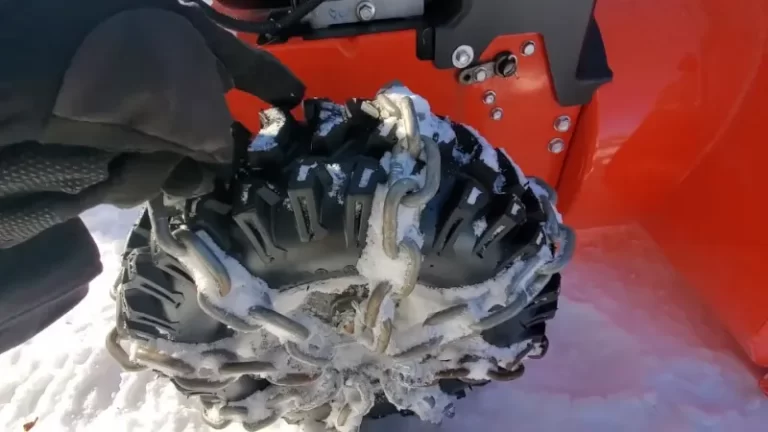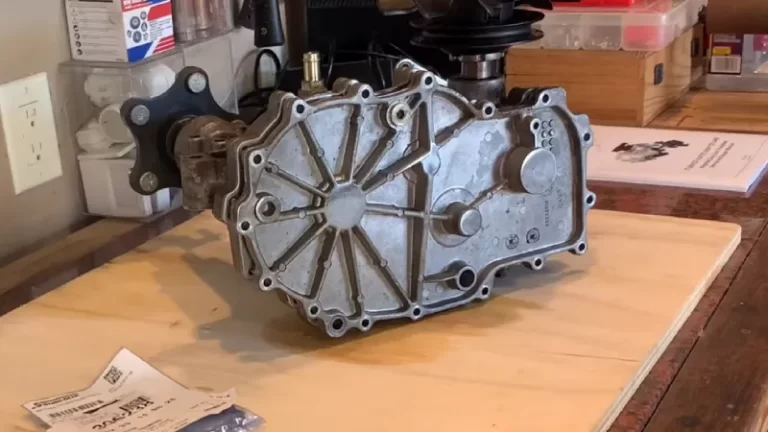X1000r/min Meaning

x1000r/min is a term that is commonly found on tachometers, which are gauges on a car’s dashboard that measure the speed of the engine’s rotation in revolutions per minute (RPM). Understanding x1000r/min and how to use the tachometer is important for any driver, as it can help them avoid damaging the engine by shifting gears at the wrong time or allowing the engine to overrev.
It is also useful for monitoring the car’s performance and ensuring that it is running smoothly. The x1000r/min scale on a tachometer is used to accurately measure and display the engine’s RPM, and being able to read and interpret this scale is essential for properly using the tachometer.
In this article, we will delve into the significance of x1000r/min and how to effectively use the tachometer to get the most out of your car.
You'll Learn About
What Does X1000r/min Means?
The tachometer is a gauge on a car’s dashboard that measures the speed of the engine’s rotation in revolutions per minute (RPM). It is typically used to help drivers shift gears at the appropriate time when driving a manual transmission vehicle.
In automatic transmission vehicles, the tachometer can still be useful for monitoring the engine’s RPM and ensuring that it is not overrevving or experiencing any problems. It is generally considered an important instrument to have on a car, as it can help drivers avoid damaging the engine by shifting gears at the wrong time or allowing the engine to overrev.
It is also useful for monitoring the car’s performance and ensuring that it is running smoothly. The tachometer is usually located near the speedometer on the dashboard and is labeled with a “T” or a symbol of a spinning engine.
What is a Tachometer and How Does It Work?
A tachometer is a gauge found on a car’s dashboard that measures the speed of the engine’s rotation in revolutions per minute (RPM). It is typically used to help drivers shift gears at the appropriate time when driving a manual transmission vehicle.
How It Works
The tachometer works by measuring the speed at which the engine’s crankshaft is turning. This is done using a sensor or pick-up that is mounted on or near the crankshaft and sends a signal to the tachometer.
The tachometer then converts this signal into a reading on the gauge, which is displayed in RPM.
In a manual transmission vehicle, the tachometer is used to help drivers shift gears at the optimal engine RPM for the best fuel efficiency and performance. The engine’s RPM will increase as the car speeds up, and it is generally recommended to shift gears at a specific RPM range to get the most out of the engine.
Example
For example, it is generally advised to shift up to a higher gear when the tachometer reading reaches around 2,500-3,500 RPM, depending on the specific car and driving conditions. Shifting at the wrong RPM or allowing the engine to overrev can lead to decreased fuel efficiency and potentially cause damage to the engine.
The tachometer is an important tool for helping drivers shift gears at the right time and maintain their car’s performance.
Understanding X1000r/min and Its Use in a Tachometer
Refers to the Multiplier Used
The x1000r/min scale on a tachometer refers to the multiplier used to accurately measure and display the engine’s RPM. The “x1000” portion of the scale indicates that the tachometer reading should be multiplied by 1000 to get the actual engine RPM.
For example, if the tachometer reads “1x1000r/min”, the actual engine RPM is 1000. If the tachometer reads “2x1000r/min”, the actual engine RPM is 2000, and so on.
Read and Interpret
To read and interpret the x1000r/min scale on a tachometer, you will need to look at the needle on the gauge. The needle will point to a specific number on the scale, which indicates the current engine RPM.
To determine the actual engine RPM, you will need to multiply the reading on the scale by 1000. For example, if the needle is pointing to “2” on the x1000r/min scale, the actual engine RPM is 2 x 1000 = 2000.
Importance
It is important to accurately read and interpret the x1000r/min scale on a tachometer to avoid engine damage. If the engine is allowed to overrev or if the gears are shifted at the wrong RPM, it can lead to decreased fuel efficiency and potentially cause damage to the engine.
By properly using the tachometer and paying attention to the x1000r/min scale, drivers can ensure that their car is running smoothly and efficiently and avoid any unnecessary damage to the engine.
Tips for Using the Tachometer Effectively
There are several tips for using the tachometer effectively to get the most out of your car:
Use the Tachometer to Monitor Engine Performance
The tachometer is a useful tool for monitoring the health and performance of your car’s engine. By paying attention to the tachometer readings, you can catch any potential issues early on and address them before they become more serious problems.
Shift Gears at the Optimal Rpm
As mentioned earlier, shifting gears at the right RPM can help optimize fuel efficiency and extend the lifespan of your engine. Consult your car’s owner’s manual or a mechanic to determine the best RPM range for shifting gears in your specific vehicle.
Use the Tachometer to Diagnose Engine Problems
If you notice unusual readings on the tachometer, it could be a sign of an issue with your car’s engine. By paying attention to the tachometer, you can identify any potential problems and address them before they become more serious.
Adjust the Timing of Ignition
In some cases, adjusting the timing of ignition can improve fuel efficiency and engine performance. The tachometer can be used to help determine the best timing of ignition for your specific car.
In addition to these tips, it is generally a good idea to regularly check and maintain your car’s engine to ensure that it is running smoothly and efficiently. This can include tasks such as checking the oil level, replacing the spark plugs, and having the car serviced by a mechanic on a regular basis.
By using the tachometer effectively and properly maintaining your car’s engine, you can help ensure that your car is running at its best and avoid any unnecessary problems or damage.
Tips for Using the Tachometer Effectively
Here are some additional tips for using the tachometer effectively:
Pay Attention to the Redline
Many tachometers have a redline marked on the gauge, which indicates the maximum safe RPM for the engine. If the needle on the tachometer goes into the redline, it is an indication that the engine is being overrevved and could be damaged. It is important to avoid letting the needle go into the redline and shift gears before reaching this point.
Consider Using a Shift Light
Some cars come equipped with a shift light, which is a small light on the dashboard that illuminates when the engine RPM reaches a certain point. This can be a helpful tool for knowing when to shift gears, especially if you are new to driving a manual transmission vehicle.
Monitor the Tachometer When Driving Aggressively
If you are driving aggressively or towing a heavy load, it is important to pay close attention to the tachometer to ensure that the engine is not being overworked. If the needle on the tachometer is consistently in the higher RPM range, it could be an indication that the engine is being pushed to its limits and could potentially be damaged.
Use the Tachometer to Help Match the Engine Speed to the Road Speed
In some cases, it may be necessary to adjust the engine speed to match the road speed, such as when driving up a steep hill or in stop-and-go traffic. The tachometer can be used to help find the optimal engine speed for the current driving conditions and ensure that the engine is not being overworked.
By following these tips, drivers can effectively use the tachometer to get the most out of their car and avoid any unnecessary problems or damage. It is important to familiarize yourself with the tachometer and understand how it works to ensure that you are using it to its full potential.
X1000r/min Explained Simplified
The term X1000r/min refers to the rotational speed of an engine, measured in thousands of revolutions per minute. This metric is crucial for understanding the performance and efficiency of machinery. Higher RPMs generally indicate more power but can also lead to increased wear and tear.
While you’re learning about engine performance, consider exploring other maintenance tips. For example, if your Briggs and Stratton compression release is stuck, addressing it can improve engine function. Additionally, understanding Hydro-Gear ZT-3100 problems can help you maintain your equipment more effectively.
Conclusion
In conclusion, understanding and using the x1000r/min scale on a tachometer is important for any driver. The tachometer is a valuable tool for monitoring the performance of a car’s engine and shifting gears at the optimal RPM to get the most out of the engine.
By accurately reading and interpreting the x1000r/min scale, drivers can avoid damaging the engine and ensure that their car is running smoothly and efficiently. Familiarizing yourself with the tachometer and understanding how to use it effectively can help you get the most out of your car and avoid any unnecessary problems or damage.
It is important for drivers to take the time to understand the tachometer and use it to their advantage, as it can be a valuable tool for maintaining the health and performance of their car.





